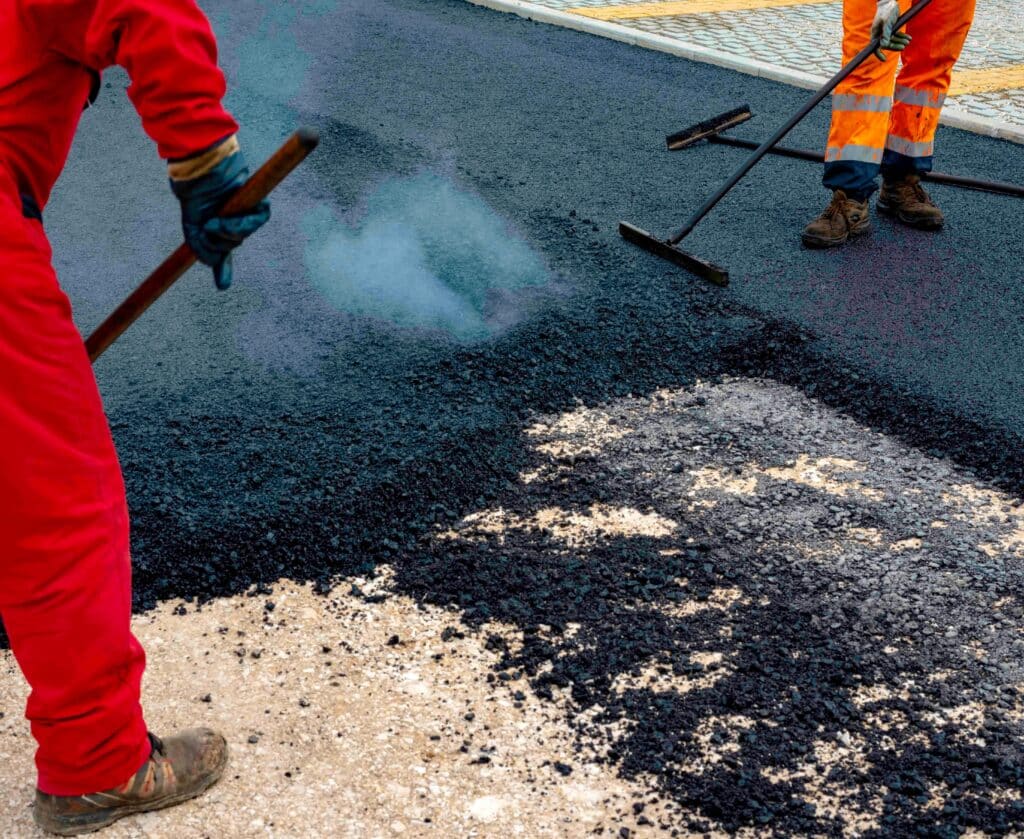Hot Mix Asphalt Paving: Redefining Industrial Residential Property Landscapes
Hot Mix Asphalt Paving: Redefining Industrial Residential Property Landscapes
Blog Article
Opening the Secrets of Hot Mix Asphalt Innovation
Discovering the midsts of hot mix asphalt innovation uncovers a globe where exact formulations and meticulous procedures assemble to form our roads and infrastructure. The fusion of accumulations, fillers, and binders isn't merely a construction job yet a strategic orchestration of resilience and performance.
Value of Hot Mix Asphalt
Hot Mix Asphalt plays a vital duty in modern-day infrastructure development due to its sturdiness and cost-effectiveness. As the most frequently made use of leading product for roadways, freeways, and car parking lots, Hot Mix Asphalt provides a variety of benefits that contribute to its value in building jobs.
The longevity of Warm Mix Asphalt originates from its make-up, that includes accumulations, binder, and filler products that are very carefully picked and blended to meet particular performance requirements. This precise mix causes a solid and versatile pavement that can endure frequent usage without substantial deterioration. Hot Mix Asphalt is 100% recyclable, further boosting its sustainability and ecological benefits. Overall, the importance of Warm Mix Asphalt in infrastructure growth can not be downplayed, as it continues to be a cornerstone of modern-day building and construction methods.
Elements of Asphalt Mixes
The structure of asphalt blends is composed of thoroughly selected accumulations, binder, and filler products that are essential for accomplishing details performance needs. Aggregates are the main element of asphalt blends, offering stamina and security. The binder, commonly bitumen or asphalt cement, holds the accumulations together and provides flexibility and toughness to the mix.
The combination and proportion of these components play a considerable function in establishing the top quality and performance of the asphalt mix. Designers carefully develop the mix to satisfy particular demands, thinking about aspects like website traffic quantity, climate problems, and sidewalk life-span. Correct option and harmonizing of aggregates, binder, and fillers are necessary for producing durable, lasting asphalt pavements.
Mixing and Manufacturing Strategies

As soon as the accumulations are chosen, the binder, frequently asphalt cement, is contributed to bind the materials with each other. The binder's high quality and amount substantially influence the mix's resistance, adaptability, and strength to ecological variables. Additionally, fillers like moisturized lime or Rose city concrete may be integrated to boost specific characteristics of the asphalt mix, such as its workability or moisture resistance.
Throughout manufacturing, the accumulations and binder are heated, usually between 250-325 ° F(121-163 ° C ), to help with mixing and make certain correct finish of the aggregates. The mixing procedure has to be complete to accomplish a homogeneous mix that promotes the wanted performance qualities of the asphalt. Various strategies, such as batch blending or drum blending, are employed to attain regular and top notch asphalt blends for building projects.
Variables Impacting Asphalt Efficiency
Aspects influencing asphalt performance encompass a variety of variables that affect the resilience, long life, and general top quality of asphalt pavements. One vital factor is the high quality of materials utilized in the asphalt mix. The kind and source of accumulations, the binder quality, and the ingredients all play a significant role in establishing the performance of the asphalt sidewalk. The rank of aggregates is vital as it affects the mix's resistance, workability, and security to rutting and cracking.

Environmental problems also influence asphalt efficiency. Temperature variants, moisture seepage, and web traffic lots can all influence the architectural honesty of the sidewalk. Design factors to consider, such as sidewalk density and water drainage, are necessary in making certain the long-lasting efficiency of the asphalt pavement. By very carefully considering these factors, service providers and engineers can maximize asphalt efficiency and boost the life span of sidewalks.
Sustainable Practices in Asphalt Innovation
Additionally, the growth of warm-mix asphalt (WMA) technologies has acquired traction in the last few years. WMA permits the manufacturing and placement of asphalt mixes at reduced temperature levels compared to conventional hot-mix asphalt, resulting in lowered energy special info consumption and greenhouse gas emissions. The use of permeable asphalt mixes can aid alleviate stormwater runoff concerns by enabling water to infiltrate with the pavement and into the ground, promoting all-natural water purification and charge processes. By applying these sustainable techniques, the asphalt market can add to developing a more ecologically friendly and durable framework network.
Verdict
Finally, hot mix asphalt innovation plays a crucial role in contemporary facilities growth as a result of its resilience and cost-effectiveness. By meticulously balancing parts, utilizing proper blending strategies, and taking into consideration different elements, engineers can produce top quality asphalt mixes that stand up to rush hour loads and harsh weather conditions. Accepting lasting techniques, such as making use of warm-mix innovations and recycled materials, additionally improves the ecological friendliness of asphalt technology.
Mixing and manufacturing strategies in hot mix asphalt technology involve the specific mix and processing of aggregates, binder, and fillers to develop a high-performance and long lasting asphalt mix.Elements influencing asphalt efficiency include a range of variables that influence the longevity, durability, and overall top quality of asphalt sidewalks. Sustainable techniques in asphalt technology encompass numerous efforts aimed at lowering the environmental impact of asphalt manufacturing and paving processes. By including you could try this out recovered asphalt sidewalk (RAP) and recycled asphalt roof shingles (RAS) into brand-new asphalt mixes, the market can substantially lower the usage of raw products and energy, while additionally reducing land fill waste.
WMA enables for the manufacturing and placement of asphalt blends at lower best site temperature levels compared to standard hot-mix asphalt, resulting in reduced energy usage and greenhouse gas discharges.
Report this page